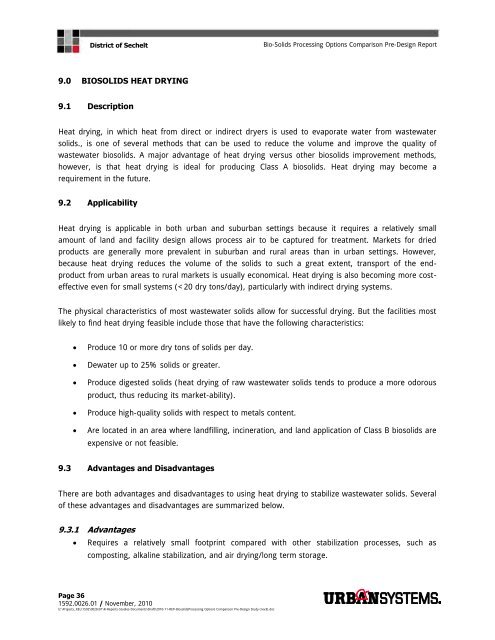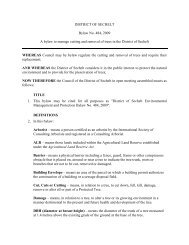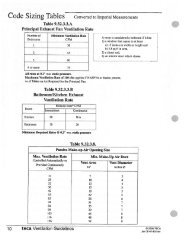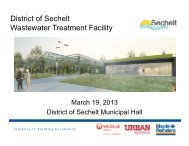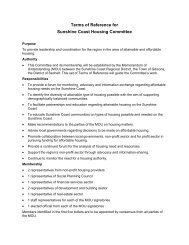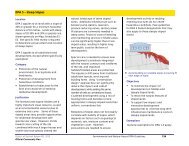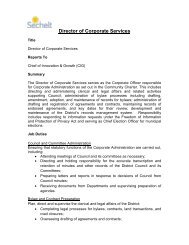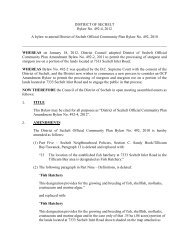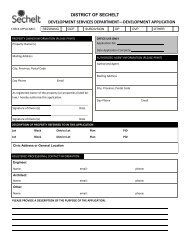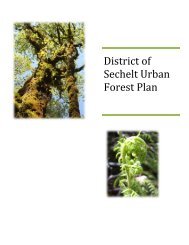District of Sechelt Preliminary Report
District of Sechelt Preliminary Report
District of Sechelt Preliminary Report
You also want an ePaper? Increase the reach of your titles
YUMPU automatically turns print PDFs into web optimized ePapers that Google loves.
<strong>District</strong> <strong>of</strong> <strong>Sechelt</strong><br />
Bio-Solids Processing Options Comparison Pre-Design <strong>Report</strong><br />
9.0 BIOSOLIDS HEAT DRYING<br />
9.1 Description<br />
Heat drying, in which heat from direct or indirect dryers is used to evaporate water from wastewater<br />
solids., is one <strong>of</strong> several methods that can be used to reduce the volume and improve the quality <strong>of</strong><br />
wastewater biosolids. A major advantage <strong>of</strong> heat drying versus other biosolids improvement methods,<br />
however, is that heat drying is ideal for producing Class A biosolids. Heat drying may become a<br />
requirement in the future.<br />
9.2 Applicability<br />
Heat drying is applicable in both urban and suburban settings because it requires a relatively small<br />
amount <strong>of</strong> land and facility design allows process air to be captured for treatment. Markets for dried<br />
products are generally more prevalent in suburban and rural areas than in urban settings. However,<br />
because heat drying reduces the volume <strong>of</strong> the solids to such a great extent, transport <strong>of</strong> the endproduct<br />
from urban areas to rural markets is usually economical. Heat drying is also becoming more costeffective<br />
even for small systems (


